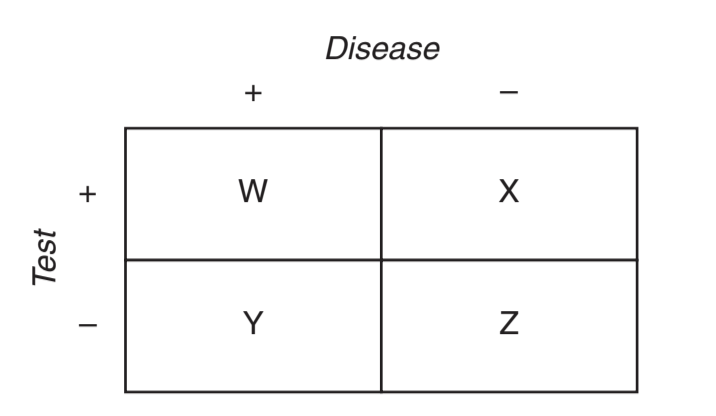The correct answer is B. The prevalence is the number of individuals with a disease in a given population at a given time. Prevalence is estimated by test results but is not a measure of a test’s validity. In the chart shown, the prevalence can also be determined by calculating the number of true-positive plus false-negative results divided by the total number of patients.
Answer A is incorrect. This term represents the incidence of positive test results.
Answer C is incorrect. This represents true positive results divided by the total number of patients. This would be the percent of true positive results of all tested, but it is not used very often.
Answer D is incorrect. This represents true positive results divided by the total number of patients tested less those with true-positive results, and would not be a meaningful calculation.
Answer E is incorrect. This represents the number of true-positive results over the total number of patients without disease. This would not be a meaningful calculation.
